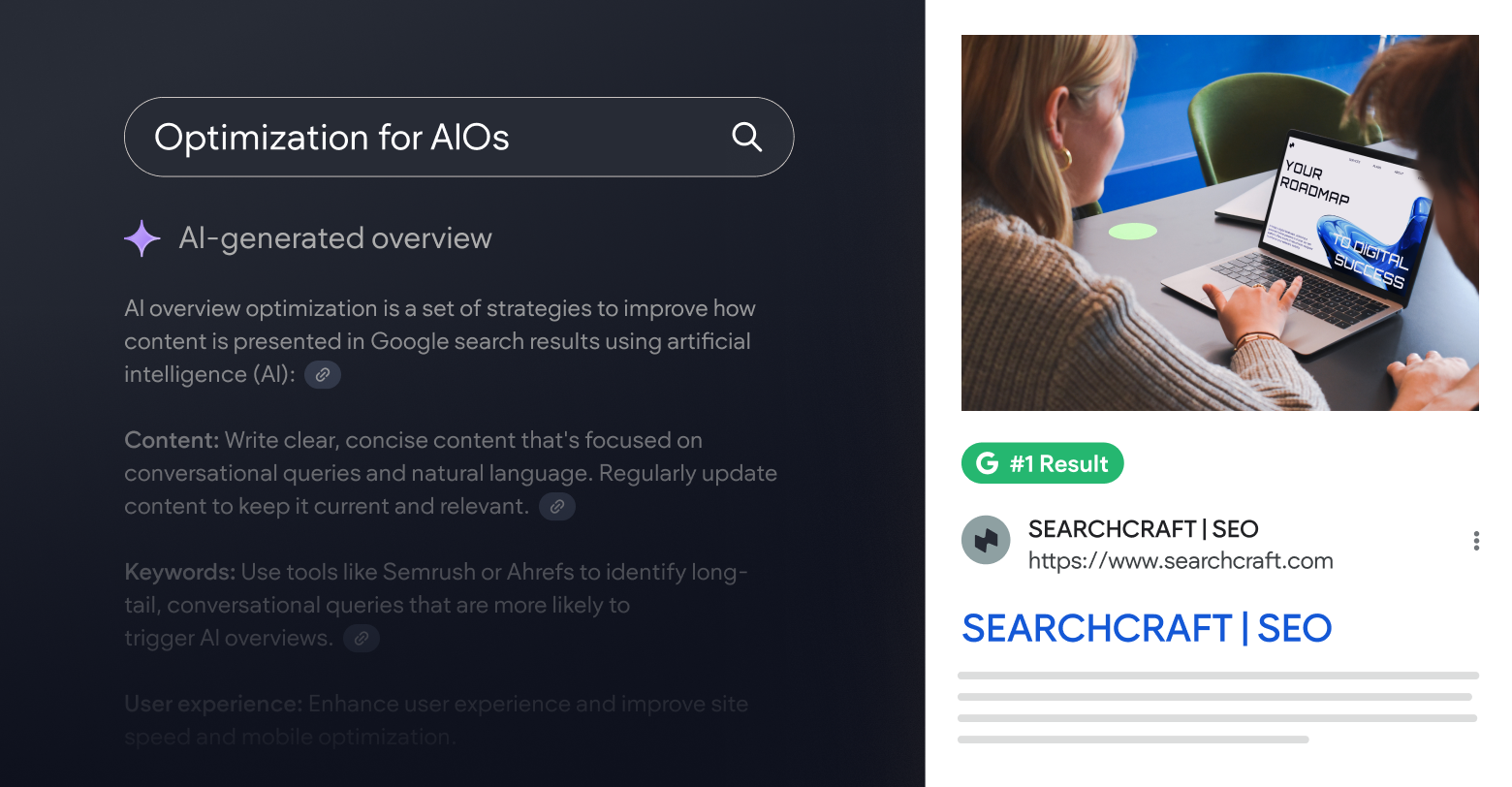While the SEO community is still debating whether AIO stands for
AI Overviews,
AI Optimization, or
AI Overviews Optimization, one thing is certain: AI-driven search is here, and digital marketing agencies are preparing for the changes that come with it.
To help agencies navigate this seismic shift, Duda partnered with
SE Ranking, a robust SEO toolkit, to uncover current trends in SEO services, pricing models, and predictions for 2025.
Is AIO an opportunity or disruption for agencies?
Artificial intelligence is transforming search, but its exact impact remains up for debate. Back in August, Rand Fishkin, CEO of SparkToro, shared research suggesting that
AI-driven search hadn't yet disrupted Google. However, more recent studies from Search Engine Journal show that
tools like ChatGPT are increasingly considered alternatives to traditional search engines.
The big question remains: How are agencies responding to this shifting terrain?
To understand this, we surveyed agencies on their plans for AI-driven optimization, including pricing and service strategies for Google’s AI Overviews (formerly SGE).
Agencies turning AI challenges into growth opportunities
One standout finding is that 61% of surveyed agencies are considering offering optimization for AIOs and other AI-driven search engines.
Out of these agencies, 43% plan to offer optimization for AIOs and other AI-driven search engines as a part of their existing offerings, and 18% plan to offer AIO optimization as an extra service. Meanwhile, 39% of agencies do not plan to expand their services to include AI-driven search optimization.
What are agencies charging for AIO optimization?
For agencies that have set their pricing, the average monthly fee for AIO optimization services is approximately $937.
“The world of SEO has been undergoing a seismic shift. Over the past two years or so, changes in search behavior and technology have shaken the very foundation of the industry, forcing agencies and businesses to adapt or risk falling behind,” says
Chris Raulf, International SEO and AI Expert and SE Ranking Brand Ambassador.
Chris also shared actionable tips during a recent Duda webinar, outlining strategies to scale SEO services and optimize for AIOs amidst these dramatic changes.
This week Chris joined a Duda webinar where he talked about what these chances mean for SEO strategies, and how to scale SEO services in the face of these dramatic changes.
“Although AIO draws some informational traffic away from your site due to its rapid answers, it also allows you to get the link to your page featured on top of every other organic result,” writes Anastasia Kotsjiubynska, SEO Team Lead at SE Ranking.
In her blog post
AI Overview sources: Whom Google prioritizes in AI Overviews, Anastasia breaks down how AI Overviews prioritize certain websites.
The rising costs of SEO: Trends and drivers
With AI disrupting search strategies, many agencies are also revisiting their pricing models. According to our survey:
- 70% of agencies have either already raised their SEO pricing or plan to do so in 2025.
- 32% recently increased their rates, while 38% are planning increases next year.
What’s driving the price hikes?
Around 28% of agencies report increasing their rates due to inflation and higher living costs, and 25% attribute their rate increases to enhanced expertise and value proposition, which allows them to deliver at higher levels and compete at higher market rates.
Pricing strategies that SEO agencies prefer
When it comes to pricing models, monthly retainers are the gold standard for SEO agencies:
- 53% of agencies prefer monthly retainers.
- 80% include monthly retainers alongside other models like hourly or project-based pricing.
How much are agencies charging?
The most popular pricing ranges are $500-$1000 per month, $50-$100 per hour, and $500-$2000 per project. 64% of agencies charge below $1,000 per month, 60% set their hourly rates below $100, and 66% charge under $2,000 per project.
Location matters: North America vs. Europe
Agencies in North America typically charge higher rates than their European counterparts. For example:
- 40% of agencies in the US and Canada charge over $125 per hour.
- By contrast, only 6% of European agencies charge that much.
85% of agencies bundle their service into SEO packages. And nearly 93% of agencies provide SEO services along with PPC, SMM, web design, and website maintenance.
“Carefully designed pricing models are the cornerstone of success for SEO agencies because they secure a steady client flow and promote sustainable growth,” writes Svetlana Shchehel, Head of Content at SE Ranking.
In her blog post
SEO Pricing Survey Insights: How Much Does SEO Cost in 2025?, Svetlana provides more detail on the SEO pricing survey.
Survey methodology: Who participated?
The Duda-SE Ranking survey included insights from 260 agencies:
- 170 survey participants from the US, Canada, Australia, New Zealand, Singapore, the UK, Ireland, and Europe.
- 90 agencies listed in SE Ranking’s Agency Catalog.
Who do these agencies serve?
The vast majority (94%) focus on small and local businesses, with other key industries including:
- E-commerce: 54%.
- Non-profit organizations: 32%.
- SaaS companies: 15%.
Agency size breakdown
- 78%: Small agencies (under 10 people), including:
- 53% with under 5 employees.
- 25% with 5 to 10 employees.
- Larger agencies (11+ employees) make up only 22% of the dataset.
“We gathered a total of 260 responses from survey participants and agencies listed in our Agency Catalog. While this sample size may not be large enough to reach statistical significance, we believe this overview provides valuable insights for SEO agencies looking to benchmark their pricing models against those of their peers,” notes Svetlana in her blog post.
Key takeaways for agencies in 2025
As AI reshapes the future of search, agencies are turning challenges into opportunities through smart pricing strategies and new service offerings like AIO optimization. Staying adaptable, innovative, and transparent with pricing will be critical for success as we head into 2025.
Curious how your agency stacks up? Start benchmarking your pricing and get ready to embrace the AI-driven future.












